Tuscany’s probably the most romanticized region in Italy, and honestly, it lives up to the hype. Rolling hills covered in vineyards, medieval hilltop towns that look like they’ve been painted by Renaissance masters, and cypress-lined roads that curve through landscapes so perfect they seem almost artificial. But here’s the thing—most visitors stick to the same handful of places: Florence, Siena, and maybe San Gimignano if they’re feeling adventurous.
Meanwhile, dozens of incredible towns and villages sit practically empty, waiting for someone curious enough to venture off the well-worn tourist trail. The real magic of Tuscany isn’t just in the famous destinations that everyone photographs for Instagram.
It’s in tiny villages where locals still gather in the piazza each evening, wineries where families have been making wine for 20 generations, and medieval towns where you can walk down cobblestone streets without dodging tour groups every few steps. Here are 19 hidden gems in Tuscany that’ll give you the authentic Italian experience most tourists never find.
Volterra
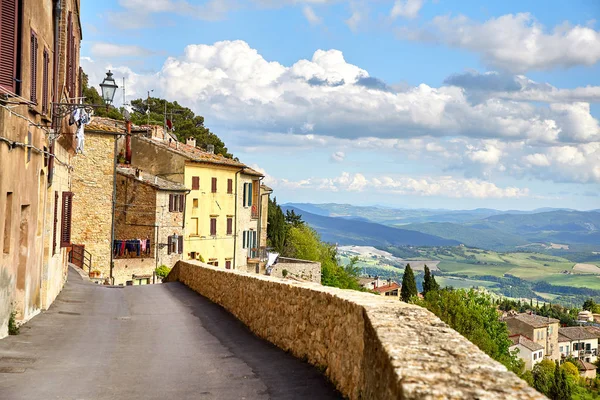
This ancient Etruscan town perches on a hilltop about 30 miles from San Gimignano, but somehow manages to stay completely off most tourist itineraries. Volterra’s been continuously inhabited for over 3,000 years, and walking through the medieval streets feels like traveling through time, especially when the mist rolls up from the valleys below.
The town’s famous for alabaster carving, and you can still watch artisans work in tiny workshops using techniques passed down through generations.
Pitigliano
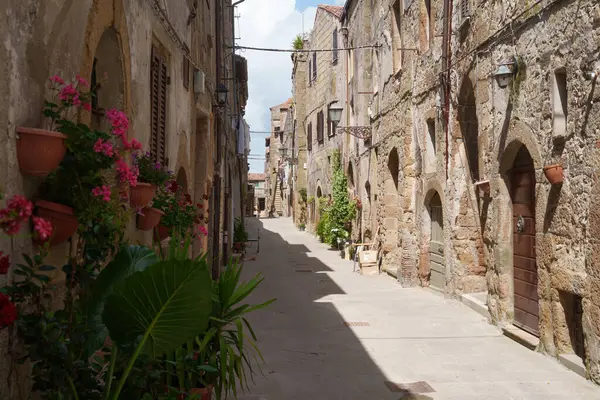
Built directly into volcanic rock cliffs in southern Tuscany, Pitigliano looks absolutely impossible from a distance, like someone carved an entire town from the mountainside itself. The Jewish community here dates back to the 16th century, earning it the nickname ‘Little Jerusalem,’ and the restored synagogue and kosher wine cellars tell fascinating stories about religious tolerance in Renaissance Italy.
Getting here requires winding through some seriously spectacular countryside that most tourists never see.
Like Travel Pug’s content? Follow us on MSN.
Massa Marittima
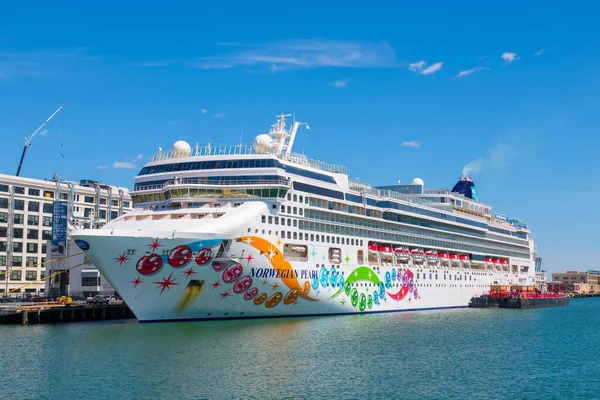
This medieval mining town sits on a hill overlooking the Maremma region, completely ignored by most visitors despite having one of Tuscany’s most beautiful main squares. The cathedral’s facade is absolutely stunning, while the surrounding streets showcase perfectly preserved medieval architecture without the crowds you’ll find in more famous hilltop towns.
The nearby countryside offers hiking trails through old mining areas where wild boar and deer have reclaimed abandoned industrial sites.
Sorano
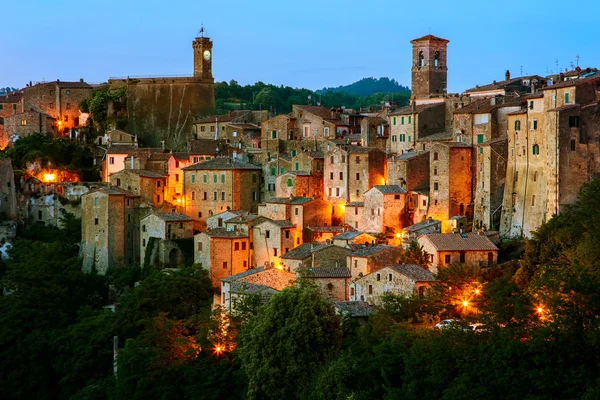
Another town carved directly into volcanic cliffs, Sorano feels like a medieval fortress that’s somehow survived unchanged for centuries. The approach through narrow gorges is dramatic enough, but the town itself—with buildings that seem to grow from the rock face—creates this incredible sense of stepping into a fantasy novel.
Underground passages and caves honeycomb the cliffs below, some dating back to Etruscan times.
Anghiari
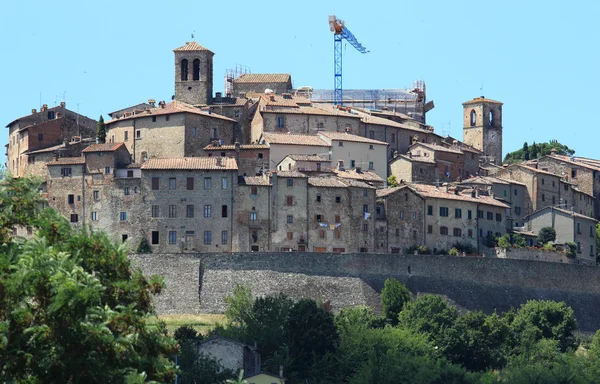
This tiny walled town near the border with Umbria inspired one of Leonardo da Vinci’s most famous paintings, though the original fresco is lost and the town remains blissfully undiscovered by mass tourism. Medieval streets wind between stone houses adorned with flower boxes, while the surrounding countryside offers views across the Tiber Valley that haven’t changed much since Renaissance times.
Local restaurants serve hearty mountain cuisine that’s completely different from coastal Tuscan cooking.
Like Travel Pug’s content? Follow us on MSN.
Castiglione della Pescaia
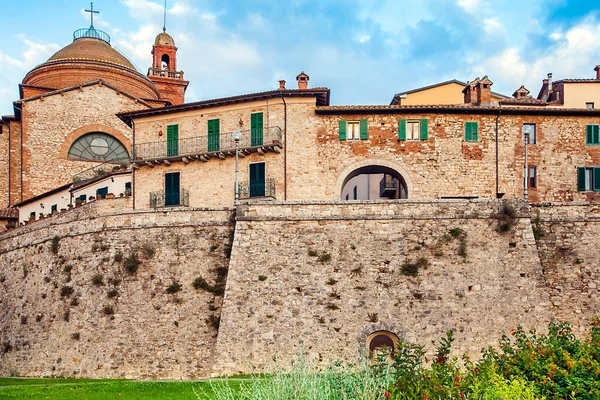
While inland Tuscany gets most of the attention, this coastal town combines medieval charm with some of Italy’s best beaches. The hilltop old town overlooks a harbor filled with fishing boats and pleasure craft, while sandy beaches stretch for miles in both directions.
Summer brings Italian families on vacation, but spring and fall offer nearly empty beaches and perfect weather for exploring the Maremma Natural Park.
Cetona

Nestled in the hills near the border with Umbria, Cetona attracts well-heeled Romans and Florentines who’ve discovered its charm, but somehow it remains off international tourist radar. The town cascades down a hillside topped by a medieval fortress, while the surrounding countryside is dotted with luxury vacation homes hidden among olive groves.
Despite the upscale residents, the town center maintains its authentic character with excellent restaurants and friendly locals.
Suvereto
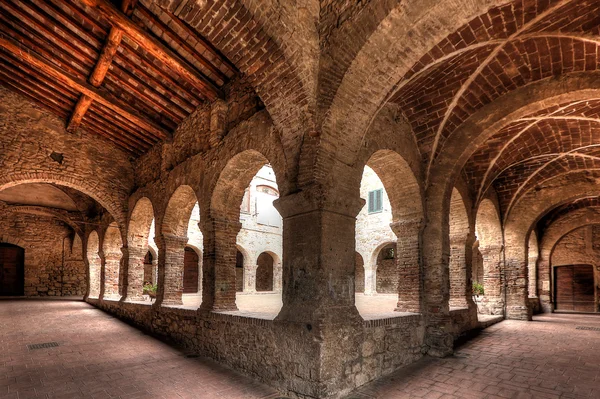
This medieval village in the heart of Tuscany’s emerging wine region sits surrounded by vineyards producing some exceptional wines that rarely make it beyond Italy. The town’s narrow streets and stone buildings create this perfect backdrop for wine tasting, while local restaurants serve dishes that pair perfectly with nearby vintages.
The lack of tour buses means you can actually enjoy leisurely tastings and conversations with winemakers.
Like Travel Pug’s content? Follow us on MSN.
Giglio Island
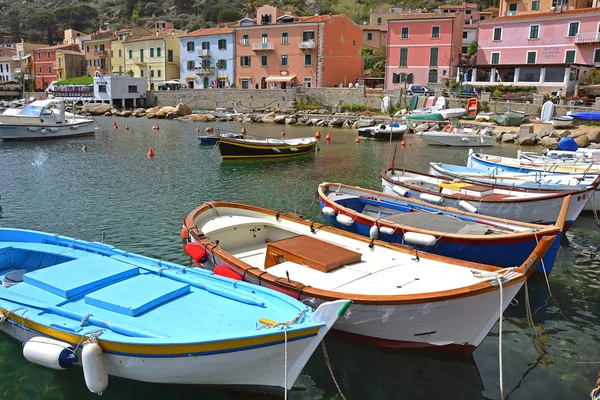
While not technically on the mainland, this island off Tuscany’s coast offers crystalline waters, hiking trails, and medieval villages without the crowds that pack Elba during the summer months. The ferry from Porto Santo Stefano takes about an hour, but once you arrive, you’ll find beaches that rival anything in the Mediterranean and a pace of life that encourages serious relaxation.
The island’s three small towns each have distinct personalities, from the medieval capital to tiny fishing villages.
Poppi
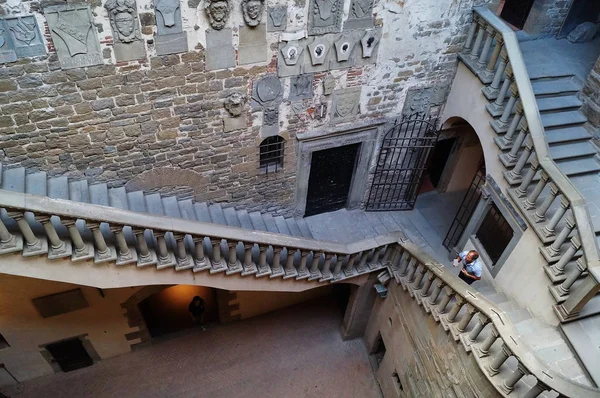
Dominated by a castle that looks like something from a fairy tale, Poppi sits in the Casentino Valley, surrounded by forests that turn spectacular colors in autumn. The town’s layout hasn’t changed since medieval times, with covered walkways, stone staircases, and views across the Arno Valley that stretch to the Apennine Mountains.
It’s close enough to Florence for a day trip, but feels completely removed from modern tourism pressures.
Casole d’Elsa
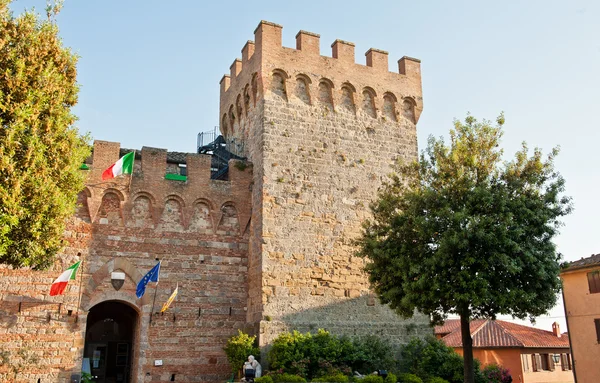
This hilltop town offers everything you want from the Tuscan countryside—rolling hills, cypress trees, vineyards, and medieval architecture—without the crowds that pack more famous destinations. The approach through winding roads reveals panoramic views that seem to stretch forever, while the town itself maintains this authentic atmosphere where locals still outnumber visitors.
Several excellent restaurants serve regional specialties using ingredients from surrounding farms.
Like Travel Pug’s content? Follow us on MSN.
Peccioli
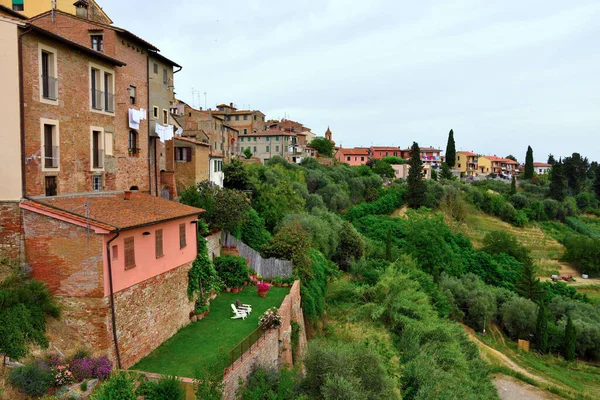
Perched on a hill in central Tuscany, Peccioli has gained attention for its innovative approach to contemporary art installations in medieval settings. The combination works surprisingly well—modern sculptures enhance rather than detract from the historical atmosphere while giving the town this unique character that sets it apart from other medieval villages.
The surrounding countryside offers hiking and cycling trails through typical Tuscan landscapes.
Castelnuovo di Garfagnana
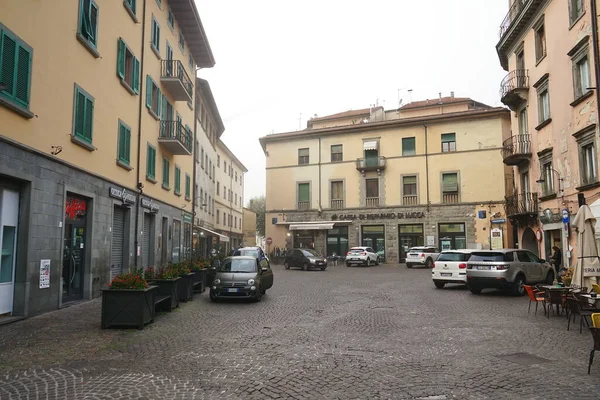
This market town sits in a valley surrounded by the Apuan Alps, offering mountain scenery that’s completely different from the typical Tuscan hill country. Medieval walls still encircle the historic center, while the surrounding area provides access to hiking trails, chestnut forests, and mountain lakes that most Tuscany visitors never discover.
The weekly market fills the main square with local products from mountain farms and artisan workshops.
Fosdinovo
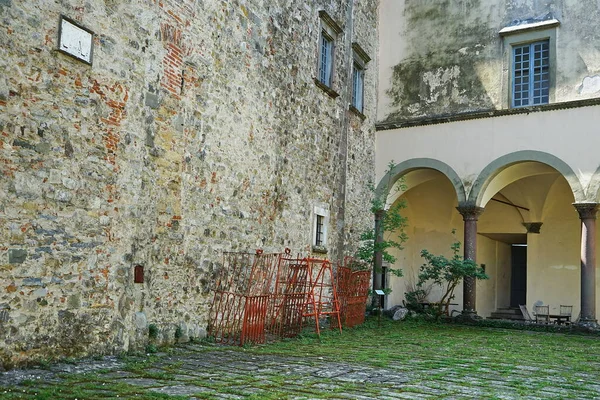
Dominated by one of Tuscany’s best-preserved castles, Fosdinovo sits near the border with Liguria in the countryside that combines mountain and coastal influences. The castle offers tours that include ghost stories and historical reenactments, while the town itself provides views across valleys that stretch to the Mediterranean.
Dante supposedly stayed here during his exile, and the atmosphere still feels appropriately dramatic and romantic.
Like Travel Pug’s content? Follow us on MSN.
Bagni di Lucca
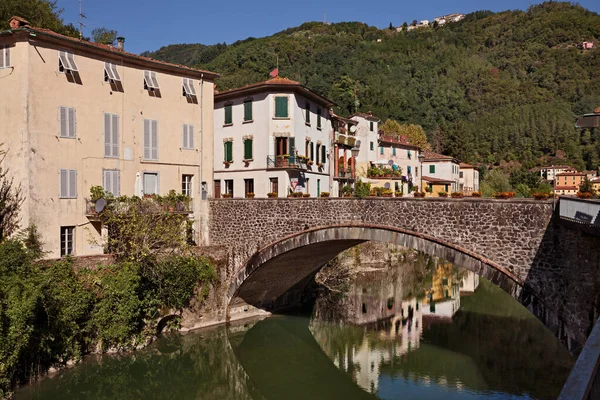
This elegant spa town flourished during the 19th century when European nobility came to take the thermal waters, but today, it remains largely forgotten by modern tourists. The belle époque architecture and grand hotels create this faded glamour atmosphere, while the thermal springs still offer relaxation in beautiful natural settings.
The surrounding hills provide hiking trails and views across the Lima Valley that few visitors ever explore.
Capalbio
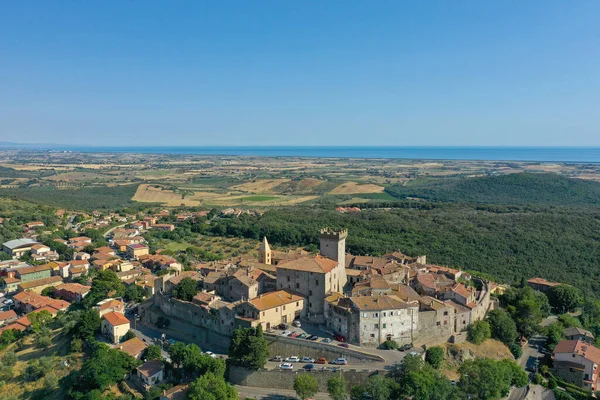
Known as the ‘Little Athens’ of Maremma for its intellectual residents, Capalbio sits on a hill just a few miles from the coast. The medieval walls completely encircle the old town, while narrow streets reveal art galleries, bookshops, and restaurants that cater to sophisticated tastes without feeling pretentious.
The nearby coast offers some of Tuscany’s wildest beaches, including areas within natural parks where development is strictly controlled.
Radicofani
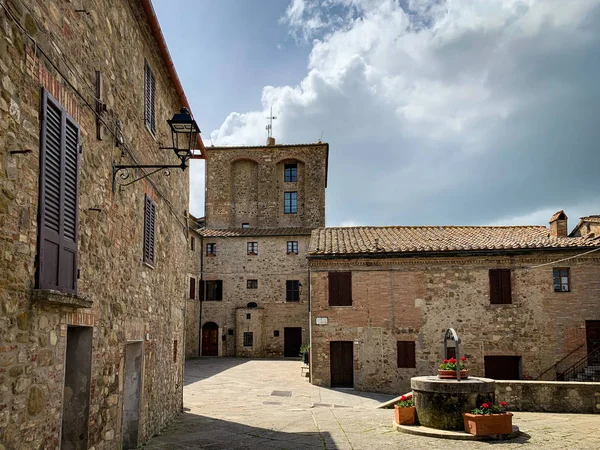
This fortress town sits on an isolated volcanic peak in southern Tuscany, visible for miles across the surrounding countryside. The massive fortress dominates the skyline while providing panoramic views that encompass three regions: Tuscany, Lazio, and Umbria.
The town itself is tiny but perfectly preserved, with stone buildings that seem to grow from the volcanic rock and an atmosphere of complete tranquility.
Like Travel Pug’s content? Follow us on MSN.
Gaiole in Chianti

While the Chianti region attracts plenty of visitors, Gaiole remains less touristy than places like Greve or Radda, despite being surrounded by some of the area’s best wineries. The town serves as an excellent base for exploring the Chianti Classico wine route, with numerous castles, abbeys, and vineyards within easy reach.
The annual L’Eroica vintage bicycle race brings cycling enthusiasts from around the world, but doesn’t affect the town’s laid-back atmosphere.
Montemerano
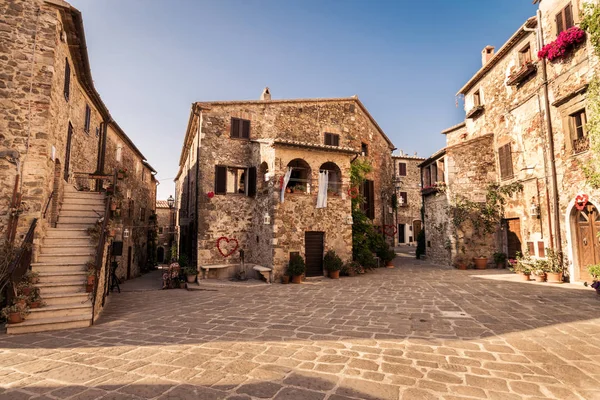
This perfectly preserved medieval village sits in the heart of Maremma, surrounded by thermal springs and wild countryside that remains largely undeveloped. The town’s circular layout within ancient walls creates this intimate atmosphere where every building contributes to the overall medieval ambiance.
Nearby Saturnia’s thermal pools are famous, but Montemerano itself offers the authentic village experience that most thermal resort visitors miss entirely.
Tuscany’s Authentic Soul
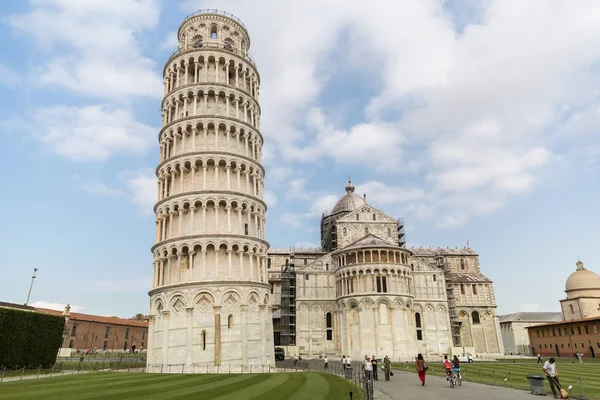
These hidden corners of Tuscany prove that the region’s most magical experiences often happen away from the crowded highlights that dominate every guidebook. While Florence’s art and Siena’s medieval splendor deserve their reputations, the real soul of Tuscany lives in these smaller places where traditions continue largely unchanged, and visitors are welcomed as guests rather than processed as tourists.
Many of these towns offer the same stunning landscapes, excellent food and wine, and historical significance as their famous neighbors, but with the crucial addition of authenticity and space to actually absorb the experience. The infrastructure exists to reach virtually any destination, though having a car opens up possibilities that public transportation simply can’t match.
Whether you’re seeking artistic inspiration, culinary adventures, or simply the chance to slow down and appreciate la dolce vita, these hidden gems offer the kind of Tuscany experience that creates lasting memories rather than just photo opportunities.
Like Travel Pug’s content? Follow us on MSN.
More from Travel Pug

- 20 Best Beach Towns in the Carolinas
- 13 Destinations Where Tourists Regularly Regret Their Trip
- 20 Things You Actually Get in First Class
- 20 Small Airports With Aviation Museums
- 20 Places in the U.S. That Are Perfect for a Reset Trip
Like Travel Pug’s content? Follow us on MSN.
